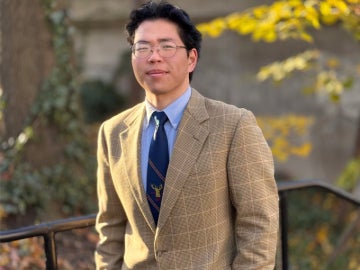Improve Yourself to Dance
July 31, 2014
Phoebe Hammer

Taylor Swift ’16 says she used the class to prevent injury.
Instructor of Dance Deborah VogelWhile dance majors fill most of Oberlin’s dance classes, DANC 221 is targeted to a different student group. Taught by instructor of dance Deborah Vogel, Body Re-education,was offered to student athletes for the first time last semester.
And what exactly is Body Re-Education? “We focus on the relationship of mind and body in improving alignment and movement,” Vogel explained. “This understanding has significant benefits and is especially important for students that push their bodies to the limit.” This semester, the course was specifically intended for varsity, club sport, and independent athletes.
Vogel is a neuromuscular educator, what she describes as “a cross between a kinesiologist and a movement analyst.” She started in the field of dance medicine, cofounded the Center for Dance Medicine in New York City, and has traveled extensively to give lectures about injury prevention and care. “My niche is being able to look at someone’s alignment and movement and see relationships in the body,” Vogel said. Her goal is to then help students bring their body back to muscular balance.
She has taught classes in the dance department and for the Conservatory of Music that focus on improving alignment, posture, and movement for many years, but last semester, for the first time, she extended her class to athletes. “My hope is that every student leaves with a better awareness of their own physical muscular patterns, their own alignment, and how to improve their efficiency.” This helps prevent future injuries and helps each student maximize their strength and long-term health.
Vogel puts together an animated lecture that she assigns before each class and then focuses class time on labs that integrate the information. Students are then able to work on their individual weaknesses.
Second-year Taylor Swift, who plays field hockey and lacrosse, says she found the class helpful for her athletic endeavors. “Before, I always assumed that my physical tightness and limitations were permanent, so I’ve had countless injuries as a result,” she said. “But in this class I learned easily fixable changes and stretches to implement daily that have made noticeable improvements. It’s definitely carried over into field hockey and lacrosse. I’ve been in less pain and been more consistent with my play.”
Fourth-year Paul Paschke, who plays lacrosse and is a sprinter on Oberlin's track and field team, found similar benefits. “ I always knew I wasn’t good at changing direction, so I learned the muscles that were weak and tight in my body to improve my change of direction in lacrosse,” he said. “There were plays this year that I hadn’t been able to make in years past that now I can make.”
This course also did not have a typical final. Instead of an exam or paper, each student chose one motion or activity to improve on and were tasked with creating a program to help them accomplish it. “I really liked the final project because I got the chance to utilize what I had learned,” said first-year Kinori Rosnow, who plays lacrosse. He chose to work on his snatch lift, a difficult Olympic lift he had been struggling with during his season. For over a month, he filmed himself practicing the movement several times a week. Together, he and Vogel studied posture and form to identify weaknesses and potential improvements. “I know how to use my legs much more efficiently now without compromising my knees. I really improved,” he added.
Vogel is one of the many professors at Oberlin who believes that well-being starts in the classroom. “Your physical body is one of the best communicators and translators of well-being,” she said. “It’s important to teach students to acknowledge and recognize that they have a body that is talking to them and give them the tools to know how to respond. That is how to be fully healthy and engaged.”
Vogel will offer this class again next fall, targeted toward dancers, but hopes to run another athlete-focused course the following semester. “I think athletes are much like dancers in terms of how they use their bodies,” she said. “I think it important we reach out to all types of performers.”
You may also like…
Learning by Teaching: Oberlin Students Share Global Music with Young Learners
College and Conservatory students in PACE 103 prepare local children for an immersive community concert at Oberlin.
Nuiko Wadden ’02 Joins Oberlin Conservatory Faculty as Assistant Professor of Harp
The versatile musician brings extensive opera, orchestral, and contemporary music experience to her role
Leo Hidy ’23 Earns 2026 Marshall Scholarship
Leo Hidy ’23, a comparative American studies major who also studied business and economics while at Oberlin, has received a 2026 Marshall Scholarship that will fund two years of graduate study in the UK.


